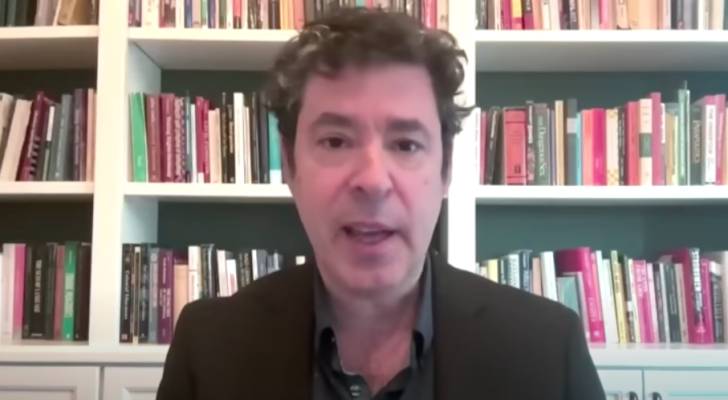This ‘normal’ 23-year-old survives in Martha’s Vineyard on an $85,000 salary — while still saving $18,000. Here’s how she gets by in a vacation town for millionaires


Martha’s Vineyard may be best known as a summer escape — coffee shops with handwritten menus, boutiques selling $80 sun hats, summer romances and lobster rolls treated like currency. But for 23-year-old Tyla Packish, it’s not a vacation destination, it’s home. She lives year-round in Oak Bluffs, her hometown on Martha’s Vineyard in Massachusetts. Don’t […]
‘Something didn’t seem right to me’: Job scams are surging as federal layoffs rise — here’s how to avoid getting duped when you’re desperate for work


Employment scams are nothing new — but they’re becoming more common, especially in the wake of mass layoffs from the Department of Government Efficiency. With thousands of federal workers suddenly out of a job, scammers are seizing the opportunity. They often create fake job listings by mimicking legitimate employer websites, hoping to trick desperate job […]
Raising Cane’s CEO Todd Graves turned a rejected chicken finger idea into a billion-dollar empire. Here’s the 1 key value he harnessed for success and how you can ‘live it every day’ too


Sometimes, making billions is just a matter of doing one thing — and doing it really well. That’s the playbook Todd Graves, founder and CEO of Raising Cane’s, has followed. With a menu that barely breaks five items — chicken fingers, fries, coleslaw, Texas toast and a cult-favorite sauce — the chain still managed to […]
Fraudsters are using a $20 ‘distraction’ scam to steal thousands of dollars from victims — nearly $5,000 drained from 1 LA teacher’s bank account. Here’s how the ‘huge violation’ went down


It’s not every day a stranger insists on handing you a $20 bill you didn’t drop. But for Sarah — whose last name has been withheld, as reported by Fox LA — that’s exactly what happened on an ordinary Wednesday afternoon at a Ralphs grocery store in Van Nuys. "He came much closer to me […]
‘A warning to Americans’: This Yale professor is moving to Canada over ‘political pressure’ put on US schools by Trump. But getting into Canada isn’t easy. Here’s the 1 thing Americans forget


Jason Stanley, a Yale philosophy professor and author of How Fascism Works: The Politics of Us and Them, is leaving the United States to take up a teaching position at the University of Toronto — a decision he said is driven entirely by the political climate under the Trump administration. The federal government is in […]
Elon Musk, father of 14, warns America needs more babies — and that ‘civilization will disappear’ unless birth rates improve. But DOGE just cut billions for maternal healthcare. What gives?


It’s the last thing maternal advocates want to hear, but Senior Advisor to the President Elon Musk — the father of 14 — has repeatedly warned that declining birth rates around the world threaten civilization. Yet under Musk’s Department of Government Efficiency (DOGE), billions in funding for maternal health care, research and community support programs […]
‘$1M? That’s it?! No, thank you’: Ramit Sethi calls out the worst financial tip he’s ever received, challenging the retirement advice most North Americans still follow


It’s the advice you hear passed around like a family recipe: Work hard, save consistently and one day you’ll retire comfortably. But what if this so-called tried-and-true advice is far from a recipe for success and more like a blueprint for disappointment? Ramit Sethi, podcast host and bestselling author of I Will Teach You to […]
This New Hampshire coffee shop embraces a ‘disgustingly pro-women’ stance — and business is booming. How this 1 bad review boosted the shop’s revenue and what it’s doing with the extra cash


There’s no shortage of coffee shops offering espresso shots and matcha lattes, but Flamingos Coffee Bar in New Hampshire has carved out a niche beyond expensive drinks. Known for its vibrant decor, playful branding and community-focused atmosphere, the café has built a loyal customer base at both its locations. Don’t miss I’m 49 years old […]
This CEO went from $300,000 in debt to a self-made millionaire. She says these 3 common money mistakes could be costing you thousands — here’s how to fix them
Bernadette Joy, CEO of Crush Your Money Goals, went from $300,000 in debt to earning her first million in just eight years — and it all started with one simple but powerful step: taking ownership of her finances. But before her fortunes began to turn, Joy often felt like she was broke and that her […]
‘Spend Z’: A staggering 40% of Gen Zers plan to splurge more on non-essentials this year compared to last — despite mounting credit card and student loan debt. Is it time for a reality check?


As Trump’s trade policies continue to send shockwaves through the economy — creating fears of rising prices, layoffs and a potential recession — investors are bracing for impact. With markets in flux and uncertainty in the air, financial anxiety is mounting. While no one can control the stock market, The Washington Post’s personal finance columnist […]